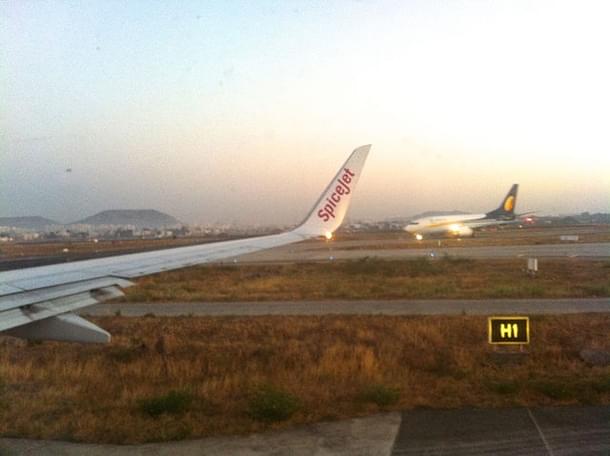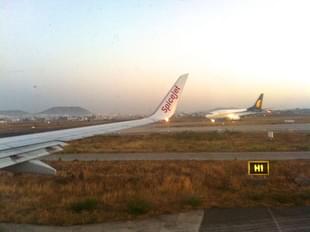Ideas
The Promise Of Pune’s New Airport: How It Can Change The City’s Fortunes
Srikanth Ramakrishnan
Oct 13, 2016, 07:11 PM | Updated 07:11 PM IST
Save & read from anywhere!
Bookmark stories for easy access on any device or the Swarajya app.


After decades of scouting for land and generally dilly-dallying around, the Maharashtra government has finally announced the final site for the new Pune International Airport. Originally proposed in the Rajgurunagar-Chakan area along the Pune-Nashik highway in the city’s north, the government has finally zeroed in on a land near Purandar in the city’s southern periphery.
The existing airport at Pune is a civilian enclave within the air force station at Lohegaon. This has posed plenty of problems, from a lack of land for an expanded terminal to restricted flying hours, which have prevented the airport from achieving its potential.
Does this remind you of two other cities? Hyderabad and Bengaluru till 2008 were operating out of defence airfields at the Begumpet and HAL, or Hindustan Aeronautics Limited, airports respectively. Both cities gained prominence during the IT, or information technology, boom, and ultimately required larger airports.
The new airports, built at Shamshabad and Devanahalli respectively, are greenfield airports built with superior standards, but are plagued with connectivity issues, especially in the case of the latter.
As Maharashtra’s cultural capital, Pune is a major hub for tourism, manufacturing and IT. Its proximity to the country’s financial capital, Mumbai, further makes it an important city for India’s economy. But the city still has a lot of work ahead of it. Pune’s infrastructure has been a mess. For a city of its stature, it lacks crucial infrastructural components, such as a ring road, a metro or even a proper bus service. The closest it has to any of these is the Pune Bus Rapid Transit System, which has been active for a year or so.
Economic development in the city is currently tilted by large measure towards the northern areas, for various reasons. The Mumbai-Pune Expressway culminates near Dehu Road in the northern edge of the city. The IT Park at Hinjewadi is also located in the vicinity. Most of Pune’s manufacturing industries are located in the Pimpri-Chinchwad Municipal Corporation (PCMC) area, again in the north, leaving very little under the Pune Municipal Corporation’s (PMC) territory. Pune’s south forms more of a cultural core for the city.
The new airport promises to change all of this. For a perspective, take the case of Bengaluru. Till 2009, economic development was concentrated in the Whitefield area in the east, where the International Tech Park was located, as well as in the Electronic City in the south along Hosur Road. Major infrastructural projects, including a 10km long elevated expressway by the National Highways Authority of India (NHAI) came up in the region to connect Electronic City to the city centre. However, when the new airport opened up in the north, things started to change. Development moved towards the north. Housing projects, an aero-city project, and several other ventures came up in the airport’s vicinity. The Outer Ring Road was upgraded with numerous flyovers, and later, with proposals of a Light Rail Network as well. However, road connectivity to the airport was sluggish, with the NHAI completing its expressway to the airport in 2013. The Karnataka government is yet to start the much-touted steel flyover to ease traffic jams on the way to the airport.
The situation in Hyderabad is similar. After the opening of the airport, the city saw the launch of a 11km elevated corridor (The P V Narasimha Rao Elevated Expressway) and the speedy completion of the southern segment of the Outer Ring Road Expressway connecting to the airport. Of course, Hyderabad did see faster development in comparison to Bengaluru, but that is a different story altogether.
The Chhatrapati Sambhaji Raje Airport, as it has been named by the Fadnavis government, will come up near the Pargaon-Memane villages, close to Saswad and Purandar Fort. It will not only give southern Pune a fillip but also improve connectivity to the hill stations of Mahabaleshwar and Panchgani. The area is close to several forts, such as Purandar, Rajgad and Sinhagad and manufacturing hubs in Jejuri, Shirval and Khandala. In the long run, this location for the new airport will be a big boost to not only Pune but also nearby towns and cities like Satara.
The government has set a deadline of 2019 for the completion of the airport – one that is close but not impossible. Along with the airport, the surrounding areas too must be handed over to the newly formed Pune Metropolitan Region Development Authority (PMRDA) for development. Delhi’s Aerocity is an excellent model for setting up hotels in the airport’s vicinity as well.
But this must be asked: will simply an airport and the accompanying infrastructure turn things around for Pune? Probably not. Connectivity to the region will have to be improved significantly. Proper roads, connecting different areas of the city and its surroundings must be top priority (unlike Bengaluru, which has only one access point to the airport), especially during construction so as to ensure speedy movement of labour and equipment.
A ring road connecting the different highways entering and leaving the city needs to be built with a connector to the new airport site. Bus services need to be revamped with proper connectivity from the airport to various localities in the city. The city municipal corporations (PMC and PCMC) and the state must also plan accordingly for mass rail transit (also called Metro) from the city’s centre to the airport. There is no point in waiting close to a decade, like Hyderabad and Bengaluru, for setting up rail connectivity to the airport. Once work has begun, the connecting infrastructure must also be completed. A transport project, especially one that connects to an airport, will certainly find ample takers from the start.
The Fadnavis government has taken the right step in planning the airport in a location where it can get maximum traction for the city’s development. One can only hope that this project gets completed in quick time and Pune gets its due.
(With inputs from Amit Paranjape’s blog post)
Also Read:
Srikanth’s interests include public transit, urban management and transportation infrastructure.





